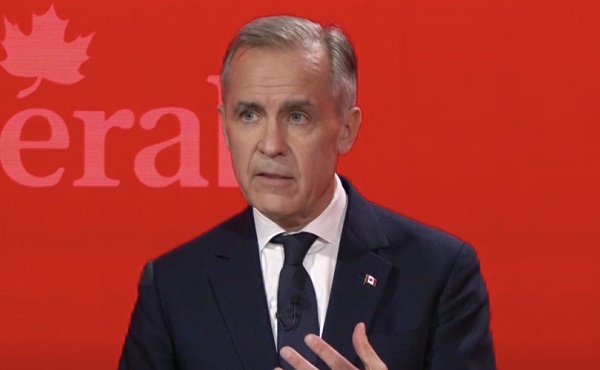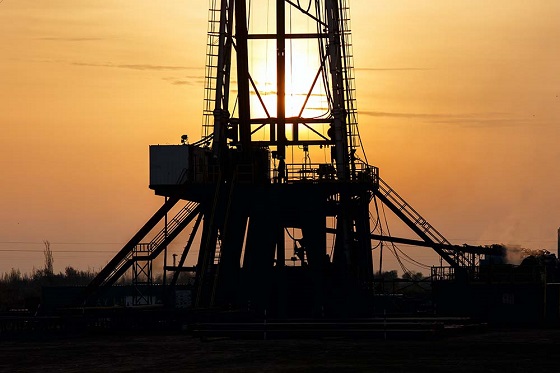Energy
Is the Carney Government Prepared to Negotiate a Fair Deal for the Oil, Gas and Pipeline Sectors

By Jim Warren
Call me a cockeyed optimist but before giving up entirely on the country or selling our energy shares we might want to wait a while to see what a Carney led government actually does.
That being said, lowering the collective blood pressure on the prairies will require answers to some key questions.
Is Mark Carney serious about getting more oil and gas to Canadian tidewater? Does Carney really think this can be done without altering Bill C-69 and ditching the tanker ban, Bill C-48? Is he actually going to leave the emissions cap on oil production, the industrial carbon tax and the clean electricity standard in place, or is he planning to pleasantly surprise us?
Notwithstanding Carney’s penchant for resumé inflation he appears to be a reasonably intelligent guy and a shrewd investor, who understands how national economies work. Assuming this is the case, Carney’s pledge to get more oil and gas exported to customers besides the US may not have been an insincere sop to voters in the West. If so, is he still naïve enough to think pipelines can be built without dismantling the barriers put up by the Trudeau Liberals to block development and stifle growth in the oil and gas sector?
Were his platitudes about zealously protecting the environment and drastically cutting emissions simply an effort to appease the left wing of the Liberals’ electoral base? Will he accept that the radical green agenda outlined in his 600 hundred page door stopper book needs to be put on the back burner during these economically challenging times?
It seems reasonable to imagine Carney was loathe to make too nice with the oil and gas industry prior to the election lest he alienate the Liberal caucus members whose support he needed to win the party’s leadership. Similarly, keeping some of the Liberals’ most radical environmentalists such as Steven Guilbeault out of cabinet could have caused unnecessary embarrassment and friction within the party during the actual election campaign.
Now that he has produced an election win that was nowhere in sight before he became the front runner for the Liberal leadership, Carney is relatively unassailable. True, he can’t be so exceedingly arrogant and dictatorial that he inspires caucus members to cross the floor of the Commons. What is more likely is that those members of the Liberal caucus with the capacity to face reality understand they were headed for political oblivion before Carney came to the rescue. It was he, not them, who secured the victory. They owe him their political lives. This provides Carney with considerable freedom of action when it comes to setting the policy agenda.
He can do some of the things he said he wouldn’t do and refrain from doing others he said he would do. For the Liberals’ communications professionals, explaining why Carney changed his positions from the wrong side of the oil, gas and pipeline debates to the right side should be nowhere near as challenging as the 24/7 turd polishing they had to do for Justin Trudeau.
Yes, the Carney government is currently enjoying its honeymoon period. For a brief while the Liberals get to feel like they are ten feet tall and politically bullet-proof. While his caucus is guzzling champagne and dividing the spoils Carney has the opportunity to plot the policy trajectory of his government.
If Mark Carney really is even half as smart as advertised he knows how important a thriving oil and gas sector (provided with new export pipelines) is to Canada during this time of geopolitical uncertainty and international economic turmoil. Our new prime minister might also appreciate now is not the time to impose inflationary environmental protection and green transition initiatives on the country.
This is not to say Carney ‘deserves a chance’ to show us what he can do. He’s not some sad little fellow whose been warming the bench on a kiddies soccer team hoping for a chance to play. When Mr. Carney entered the game his campaign assured us he is an internationally acclaimed economic wizard capable of running large and important organizations. Now he needs to walk the talk—it’s his job after all.
The point is, there needs to be a long enough pause in East-West political hostilities to see if meaningful cooperation is possible. Should they choose to do so, the producing provinces have the ability to make governing the country much more challenging than it is already. But the prudent approach at the moment is to see what the new prime mister is prepared to negotiate before sending the convoys East. We can still hold the prime minister’s feet to the fire without torching the bargaining table.
This doesn’t mean the country can spend a lot of time making key decisions. The producing provinces and their conventional energy industries have endured a nine year Liberal assault on their ability to generate economic growth. The Trudeau government trampled the rights of the provinces to develop and market their resources. Much has been made of the investment stifling effects of the uncertainty created by the Trump administration’s tariff policies. Nine plus years of uncertainty about the future of Canada’s conventional energy sector has similarly discouraged investment.
There is a wide open policy window available to Canada’s oil, gas and pipeline industries just now. The stars are aligned as well as they’ll ever be for repairing the damage done by the Trudeau Liberals. The strategic importance of being able to market our gas and oil into countries besides the US has never been clearer to Canadians. A majority of people from across the country (74%), including 60% of Quebecers currently favour the building of new oil and gas pipelines extending from the prairies to the east and west coasts.
Yes, at this point in time, the glass is actually more than half full when it comes to making public policy beneficial to the conventional energy sector and the producing provinces. Admittedly, it took a couple of days cooling off after the election results came in for me to say this.
Unfortunately, policy windows don’t stay open forever and the West is urgently seeking change. Federal-provincial negotiations on the conventional energy and pipeline files need to start now. And if the parties are truly concerned about optimizing Canada’s economic prospects and fostering national unity we have every right to expect positive results by mid-summer.
Economy
Canada’s Energy Wealth Is Bleeding South

From the Frontier Centre for Public Policy
Without infrastructure, Canada is losing billions while the U.S. cashes in on our oil and gas
Canada’s energy wealth is stuck in traffic, and our American neighbours are cashing in. It’s worse than that. Canada is bleeding millions of dollars daily because it lacks the infrastructure to export its natural resources efficiently.
While our oil and gas continue to flow—mainly to the United States—provinces like Alberta and British Columbia are forced to sell at steep discounts. This isn’t just an economic inefficiency; it’s a structural failure of national policy. The beneficiaries? American businesses and their governments which pocket the profits and tax revenues that should be circulating through the Canadian economy. This is no way to achieve economic sovereignty for Canada.
With U.S. interests reaping the rewards, this should have been a central talking point when Prime Minister Carney met with President Trump earlier this month.
Ottawa often offers the recent completion of the Trans Mountain Expansion (TMX) pipeline as an example of federal support for the energy sector. But such claims are misleading. Kinder Morgan, a private enterprise, had initially planned to build the extension without a penny from taxpayers. It withdrew only after being crippled by federal regulatory delays and political uncertainty.
Ottawa stepped in not as a benevolent saviour to help Albertans, but to prevent lawsuits and save face—ultimately overpaying for the pipeline and watching construction costs balloon to nearly six times the original estimate.
To now declare this bungled project a “gift” to Alberta, as a recent op-ed in the Toronto Star did, is not only tone-deaf: it’s an insult. It ignores the fact that Alberta’s taxpayers helped finance the very project Ottawa botched. It also reveals an astonishing lack of understanding of the historical, economic and political dynamics at play between Ottawa and Western Canada.
The tragedy is that TMX, despite its importance, is insufficient. Our infrastructure bottlenecks remain. With each passing day, Canada forfeits wealth that could fund essential improvements in health care, education and national defence.
According to the Frontier Centre for Public Policy, which has developed a real-time tracker to monitor these losses, the price differential between what we could earn on global markets versus what we settle for domestically adds up to $26.5 billion annually.
Ottawa’s reluctance to greenlight new infrastructure is a primary cause of this problem. Ironically, the losses from this reluctance in a single year would be enough to pay for another TMX, mismanaged or not. The solution lies in a national commitment to building utility corridors: designated routes that facilitate the movement of energy, goods and services unhindered across provincial boundaries.
Carney’s recent promise to remove all interprovincial trade barriers by July 1 is a nice soundbite. But unless it includes meaningful infrastructure commitments, it is bound to fail like every other rhetorical flourish before it.
Canadians should be rightly skeptical. After all, what Ottawa has failed to achieve in the 157 years since Confederation is unlikely to be accomplished in the next 60 days.
The political math doesn’t help either. The Bloc Québécois holds the balance of power in the 45th Parliament, and its obstructionist stance on national pipeline development ensures the advent of more gridlock, not less. The federal government continues to uphold Bill C-69—dubbed the “no-pipelines bill”—further entrenching the status quo.
Meanwhile, Canada remains in the absurd position of relying on U.S. infrastructure to transport oil from the West to Ontario and Quebec. This undermines our economic independence, energy security and national sovereignty. No amount of “elbows up” will correct this enormous gap.
If the prime minister is serious about transforming Canada’s economic landscape and making the country strong, he must bypass the Bloc by cooperating with the Official Opposition. A grand bargain focused on utility corridors, interprovincial infrastructure and national trade efficiency would serve Alberta, Saskatchewan, and every Canadian who depends on a strong and self-reliant economy.
The stakes are high. We need a more productive country to face challenges within Canada and from abroad. Billions in lost revenue could fund new hospitals, more schools and better military readiness.
Instead, along with the limited exports of oil and gas, we’re exporting great opportunities to middlemen—and greater economic strength—south of the border.
The path forward is clear. A strong, self-reliant Canada needs infrastructure. It needs corridors. It needs leadership.
Marco Navarro-Genie is the vice president of research at the Frontier Centre for Public Policy. He is coauthor, with Barry Cooper, of Canada’s COVID: The Story of a Pandemic Moral Panic (2023).
Business
EPA to shut down “Energy Star” program

 MxM News
MxM News
Quick Hit:
The Environmental Protection Agency is planning to shut down its long-standing Energy Star program, which has certified energy-efficient appliances for over three decades. The move is part of a sweeping agency reorganization that also includes eliminating the climate change office and other environmental initiatives not mandated by law.
Key Details:
- EPA officials announced the dismantling of the Energy Star program in a staff meeting on May 6, 2025.
- The agency is eliminating its climate-related divisions, including those overseeing Energy Star and greenhouse gas reporting.
- The move is framed as part of a broader restructuring to prioritize statutory obligations and reduce government overreach.
Diving Deeper:
In a significant shift for federal environmental policy, the Environmental Protection Agency will eliminate the Energy Star program, a popular certification used to identify energy-efficient home appliances like refrigerators, dishwashers, and dryers. Internal documents and a recorded staff meeting reveal that EPA leadership is dismantling entire divisions focused on climate change and voluntary energy initiatives.
Paul Gunning, director of the EPA’s Office of Atmospheric Protection—which is also being cut—told staff the agency would “de-prioritize and eliminate” all climate-related work outside of what’s legally required. The Energy Star program, created in 1992 under President George H.W. Bush, has helped save American households and businesses over $500 billion in energy costs and prevented billions of metric tons of greenhouse gases from entering the atmosphere.
Supporters argue the program has been a bipartisan success story. Nearly 90% of U.S. consumers recognize the Energy Star label, and manufacturers have long relied on it to market efficient products. Even the U.S. Chamber of Commerce and major industries, from lighting to food-equipment makers, have urged the EPA to keep it in place. A joint letter in March from dozens of trade organizations to EPA Administrator Lee Zeldin warned that ending the program would not benefit Americans.
Critics of the move, like Paula R. Glover of the Alliance to Save Energy, say the Energy Star program costs just $32 million annually but delivers $40 billion in utility bill savings. “Eliminating the Energy Star program is counterintuitive to this administration’s pledge to reduce household costs,” she said. Glover added that with electricity demand set to rise 35–50% by 2040, energy-saving measures are more important than ever.
The Biden-era EPA heavily prioritized climate policy and environmental regulation, often blurring the lines between environmental stewardship and bureaucratic overreach. In contrast, the current administration—under 47th President Donald Trump—is refocusing the agency toward its statutory mission, aligning with the broader conservative agenda of streamlining government and cutting redundant or ideologically-driven programs.
While Trump previously attempted to defund Energy Star during his first term, the effort failed amid bipartisan concern that privatization could lead to lowered standards. The current plan appears to accomplish the same goal through internal restructuring, cutting not just Energy Star but programs related to methane emissions reduction, climate science, and policy.
Notably, the agency’s largest union has cried foul over how the reorganization was handled. Marie Owens Powell, its president, accused the agency of “union busting” after being blocked from attending reorganization meetings. Staff have been told they may be reassigned or let go as the EPA scales back to staffing levels not seen since the Reagan administration.
For an agency that has long served as the regulatory spearhead for the left’s climate agenda, this realignment could represent a return to core environmental functions—clean air and water—while removing the taxpayer burden of subsidizing climate-centric programs with questionable returns. The decision also signals a shift away from corporatist alliances that prop up select industries under the guise of energy policy.
-

 Business2 days ago
Business2 days agoCarney pivots from anti American campaign, embracing US and hailing Trump as “transformational president”
-

 Daily Caller1 day ago
Daily Caller1 day agoMisguided Climate Policies Create ‘Real Energy Emergency’ And Permit China To Dominate US
-

 International1 day ago
International1 day agoIce Surprises – Arctic and Antarctic Ice Sheets Are Stabilizing and Growing
-

 Business2 days ago
Business2 days agoReality check—Canadians are not getting an income tax cut
-

 Business2 days ago
Business2 days agoTop business group warns Carney’s ‘net zero’ push spells disaster for Canada’s economy
-

 Alberta2 days ago
Alberta2 days agoBonnyville RCMP targeted by suspect driving a trackhoe – Update
-

 Alberta1 day ago
Alberta1 day agoEnergy projects occupy less than three per cent of Alberta’s oil sands region, report says
-

 Health2 days ago
Health2 days agoTrump signs order to stop funding for gain-of-function research believed to have caused COVID







